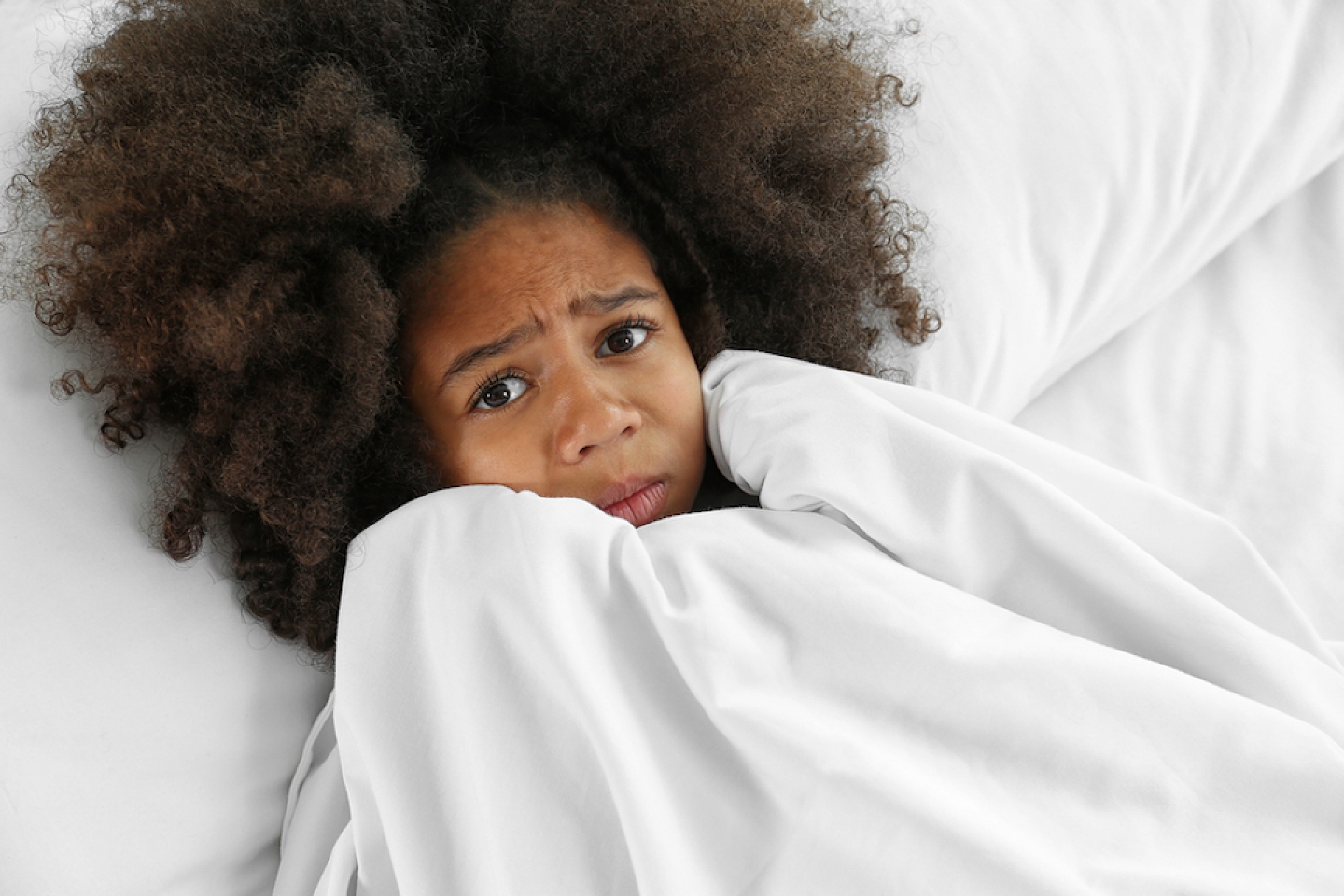
Does your child sit up and scream in terror while sleeping? She or he could be having a nightmare--or a night terror.
Night terrors stem from an arousal disorder, known as a parasomnia, which occur during deep sleep, says pediatric pulmonologist and sleep specialist Katharina Graw-Panzer, MD. They affect nearly 40% of children between 4 and 12–years-old, with 5-7 being the peak age range. Most children outgrow night terrors once they reach their teenage years, Dr. Graw-Panzer says.
Unlike a nightmare, which may frighten and awaken your child, and typically involves no screaming or acting out, a night terror is a sudden state of seeming wakefulness while your child remains asleep. “Children will not remember or be able to describe what happened,” Dr. Graw-Panzer says.
Night terrors tend to occur during the first third to first half of the night, and can last from seconds to a few minutes, although some may last longer, Dr. Graw-Panzer says. “During a night terror, your child will awaken out of sleep, and might sit up screaming in terror and even speak--but incoherently,” she says. A child might also exhibit other signs of intense fear such as agitation, sweating, a flushed face, fast heart rate or breathing, shivering, or tense muscles, she adds. Some children will even flail their arms or legs, kick, or walk around. After the episode they fall back into a deep sleep. “Usually, the child will be well rested the next morning, without displaying any physical or emotional effects,” she notes.
Although night terrors are frightening, they are usually not dangerous, as long as your child cannot hurt themselves when getting up or flailing their arms around. Covering sharp corners, removing free-standing lamps, and securing windows can keep your child safe.
Doctors don’t know what causes night terrors. “In some cases, there is a genetic predisposition, while in others, there are developmental, organic, environmental, or psychological factors,” Dr. Graw-Panzer says. Night terrors are more common in children with family members who suffer from them or from sleepwalking. They also occur more commonly in females than males.
Sleep deprivation worsens them. “Anything leading to insufficient sleep should be addressed: late bedtime, trouble falling and staying asleep, disordered breathing, and other disorders leading to poor sleep,” Dr. Graw-Panzer says. “Illness, jet lag, or time shifts can also worsen night terrors,” she adds.
During a night terror, your child won’t know that you are there, and you won’t be able to awaken or comfort them. If you do manage to awaken them, then you may find them to be confused or inconsolable. “Any attempt to comfort your child during a night terror will be met with an unresponsive expression and even more agitation,” Dr. Graw-Panzer says.
Since overtiredness can trigger night terrors, the best prevention is ensuring that your children get enough sleep each night, depending on their age and individual needs--and go to bed at a regular time. Younger children may need to resume their daily nap. “Parents should evaluate anything that affects the quality or amount of sleep their child gets,” Dr. Graw-Panzer says. “Even if your child gets the recommended amount of sleep, advancing bedtime by as little as 10-15 minutes each night might help to reduce night terrors.”
If your child gets a good night sleep and still has frequent night terrors, then you can try waking them briefly--before the 3–4-hour mark when night terrors usually occur. “This will interrupt the deep sleep in which a night terror can occur,” Dr. Graw-Panzer says.
In some cases, doctors may prescribe medication, but only if night terrors are very severe, dangerous, or disruptive to the child or family’s sleep, she says. “It is important to consult a sleep physician if your child has difficulties falling or staying asleep, complains of restless legs, snores, or has difficulty breathing at night.”